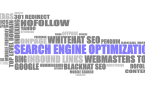Not only do images make your content more accessible and attractive to users, but they are also important for SEO. Understanding the basics of image optimization will allow you to create successful content based on SEO principles. No matter what you are writing your content for, all articles need images. Image SEO is a real science that goes beyond optimizing load times and image alt texts. This also affects how your photos are arranged on Google Photos. Considering the importance of SEO images for your page and content, this article will explain the important points in this field.
Why is image optimization important for search engines?
The marketing power of photos is undeniable. Every picture is worth a thousand words. Images attract visitors to your product Optimizing images leads to the following results.
1. It improves image search
Pictures help the author to clarify the meaning of the content and at the same time make it easier for users to receive the content. Image SEO makes you rank higher in Google image search results.
2. You get more clicks
The visual element is the key to attracting an audience. Images represent the visual elements of any website or content. People prefer sharing pages with relevant images on social networks, rather than empty text content. If the image is attractive, you will get more clicks. But pictures alone are not enough. You must know what is SEO image and apply it to have a successful website.
3. Increases page loading speed
The effect of SEO images on page loading speed is also important. Compared to written content, images are larger files. For this reason, you need a lot of space and high-speed internet to download. This is where optimization comes in. Image SEO optimization will increase your site speed. This way, you can create a faster experience for site visitors. As a result, more people will interact with your product or service. In addition, you can save some space for your server.
How can we improve your SEO image?
9 important points you should know about Image SEO are as follows.
1. Choose the correct format
Before adding the images, you must make sure that you have chosen the best type of format. The most popular formats for the web are PNG and JPEG.
- Using the PNG format produces better-quality images, but increases the file size.
- Using JPEG format may reduce the quality somewhat, but in this format, you can adjust the quality level and create a good balance.
- WebP is the only format supported by both Chrome and Firefox browsers.
2. Compress your photos
Uploading an uncompressed image causes many problems. According to HTTP Archives, images make up an average of 21% of a web page’s weight. For this reason, we recommend compressing images before uploading them to your site.
3. Create unique images
Many websites use the same generic images. If you fill your website with existing, duplicate images, it will look inauthentic.
4. Beware of copyright
Another critical point in image SEO is paying attention to copyright. When using images, make sure there are no copyright conflicts. If you use an image for which you do not have permission, you may run the risk of legal action. Google Images allows you to filter results based on what is allowed to be reused.
5. Customize image file names
The name you choose for your image files alerts Google and other search engines about what the image is about. As a result, creating descriptive, keyword-rich file names is essential for image SEO. So don’t forget to change the filename from default to help search engines find your images.
6. The alt text must be SEO friendly
Alt tags (when the browser can’t display them correctly) are text substitutes for images. Paying attention to Alt tags is useful for your overall on-page SEO strategy. With this tag, if the image is not loaded for any reason, users will understand what your vision is about. This shows the importance of alt text in image SEO. According to SEO algorithms, paying attention to this text helps associate keywords with images and get better search engine rankings.
7. Consider the image file structure
After updating Google Help, it was announced that the path and file name play a role in the order of the images. For example, if you have an e-brand, don’t put all of your products in one public folder. We recommend creating subfolders related to topics.
8. Don’t forget the role of the page title and description in image SEO
Google has also announced that it uses your page title and description as part of its image search algorithm. All of the basic on-page SEO factors like metadata, header tags, etc., affect how Google ranks images.
9. Make your photos mobile-friendly
Mobile SEO can lead to higher ranking power and better user interaction. So create responsive images.








Leave a Comment